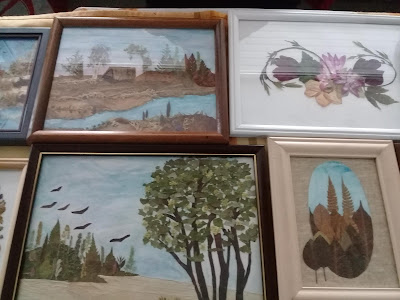Maslenitsa and Mărțișor
The
last few weeks has been very interesting for the city of Ceadir Lunga. We
celebrated two holidays that are important in our culture! Do you know which?
They are Maslenitsa and Mărțișor!! Please read
and see the pictures and videos of these holidays in our city!
 Maslenitsa |
 |
| Mărțișor |
Maslenitsa

The
first, Maslenitsa, is celebrated in February, during the week before the Great
Lent. For this year, we celebrated Maslenitsa from 12 to 18 of February. Many
different kinds of food are eaten during this period, like pancakes, cheese,
eggs, but meat is forbidden because of fasting. The last day of Maslenitsa is
called “Forgiveness Sunday.” Relatives and friends and neighbors ask each other
for forgiveness and may give each other presents.
One
of the more interesting things about Maslenitsa is the burning of the scarecrow,
also known as Lady Maslenitsa, usually made from straws, rags and tied to a
pole. The scarecrow is then burned, and people jump over the flames for good
luck.
In
the city of Ceadir Lunga, the SPTU school celebrated Maslenitsa by performing
skits and dances, showcasing the history of Maslenitsa as well as traditional
costumes of the people in Moldova, Gagauzia, and Bulgaria, which highlights the
diversity of the students in the school and in the community. The costumes were
beautiful and handmade by the students themselves. In addition, they also baked
pancakes and other sweets and shared it with their classmates and teachers.
During the celebration, they played fun games like sack race, a pancake eating
contest, and pretend cockfighting. Then, they burned the scarecrow and took
turns jumping over the flames! It was a fun, exciting event for the students,
and a nice break from all the hard work they do in school.
Mărțișor
 The second, Mărțișor, is an important holiday
celebrating the beginning of Spring, on March 1st. This holiday is
celebrated in Romania and Moldova, and similar customs in Bulgaria and Albania.
This is also a celebration of life after cold winter.
The second, Mărțișor, is an important holiday
celebrating the beginning of Spring, on March 1st. This holiday is
celebrated in Romania and Moldova, and similar customs in Bulgaria and Albania.
This is also a celebration of life after cold winter.
Mărțișor is the name for the little red and white
string with a hanging tassel traditionally given on March 1st.
Giving it to friends and family is a custom believing that the wearer will be
strong and healthy for the year. It is usually worn on the chest, close to the
heart. Men would give women Mărțișors as a symbol of love. At the end of March,
the Mărțișors are hung in branches of fruit trees as a good luck charm and
fruitful harvest in the Spring.
We celebrated Mărțișor in
our city by hosting a wonderful concert at the House of Culture on March 2nd!
Before the concert, local artisans and artists showcased their handmade work:
pictures, wooden tools, dolls, and many other things. Of course there was also
music!
Traditional dances and songs were performed in the
concert: Moldovan, Gagauzian, Bulgarian, Romanian. The costumes were very
bright and colorful. The music was lively and energetic. The people of Ceadir
Lunga were happy to see these amazing performances. The concert highlighted the
great skilsl and talent of local artists in our community. Many of the
performers were students from our schools! They did a great job in preparing
for the event and doing their best to give us a wonderful show!
We also celebrated Mărţişor in the square in the center of the city. The Bashkan of Gagauzia, Irina Vlakh joined us, and we danced a great big hora! We raised white and red balloons in the air and had a great time!
 |
| башкан Ирина Влах |
Many thanks to those who participated in Maslenitsa
and Mărțișor! We hope that you will have a healthy, fruitful year and harvest.
We hope that next year our celebrations will be even better!
To view this article in Russian, please click on the link:
https://ceadirlungapgb.blogspot.md/2018/03/blog-post_6.html
To view this article in Russian, please click on the link:
https://ceadirlungapgb.blogspot.md/2018/03/blog-post_6.html



















